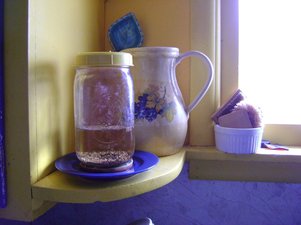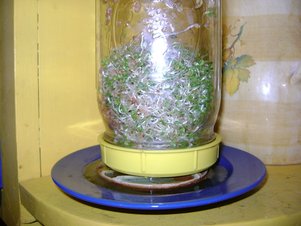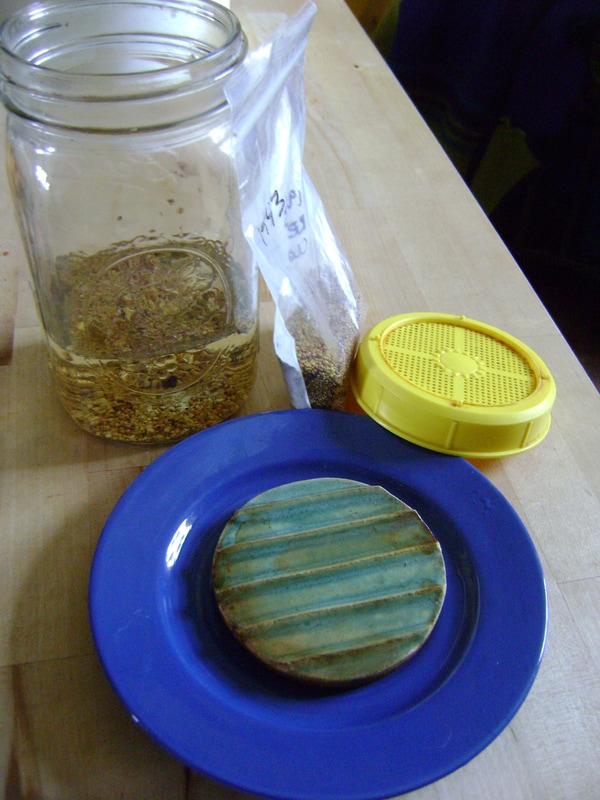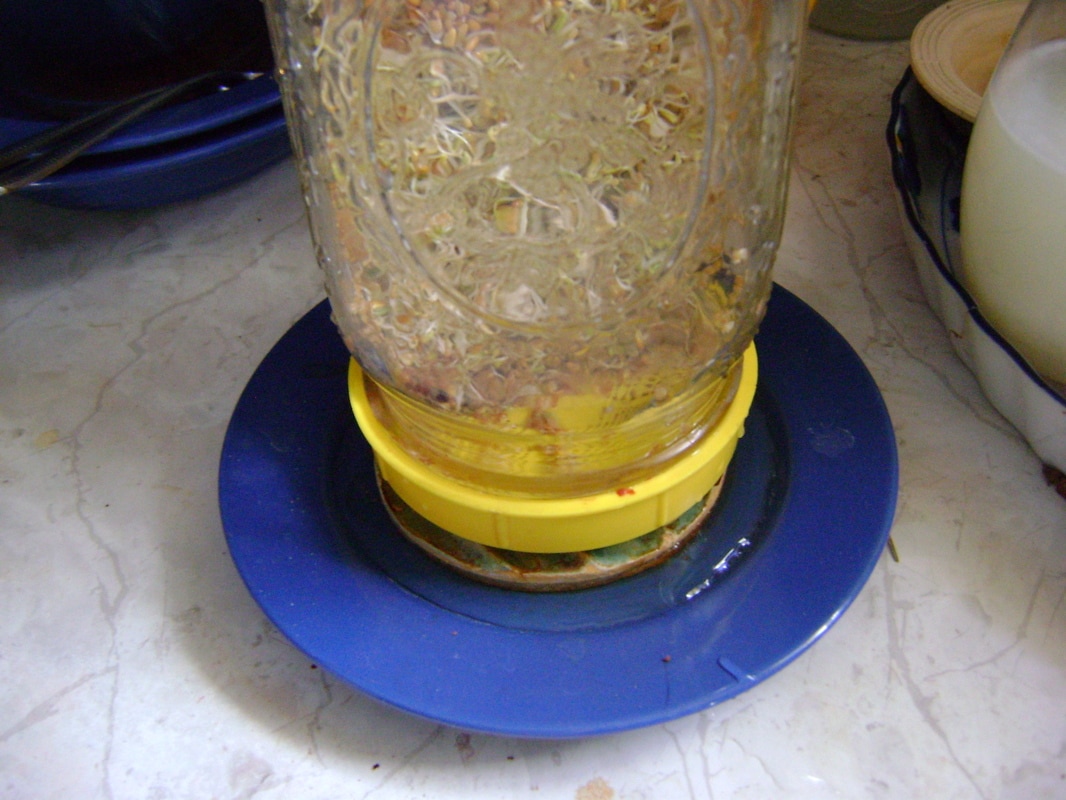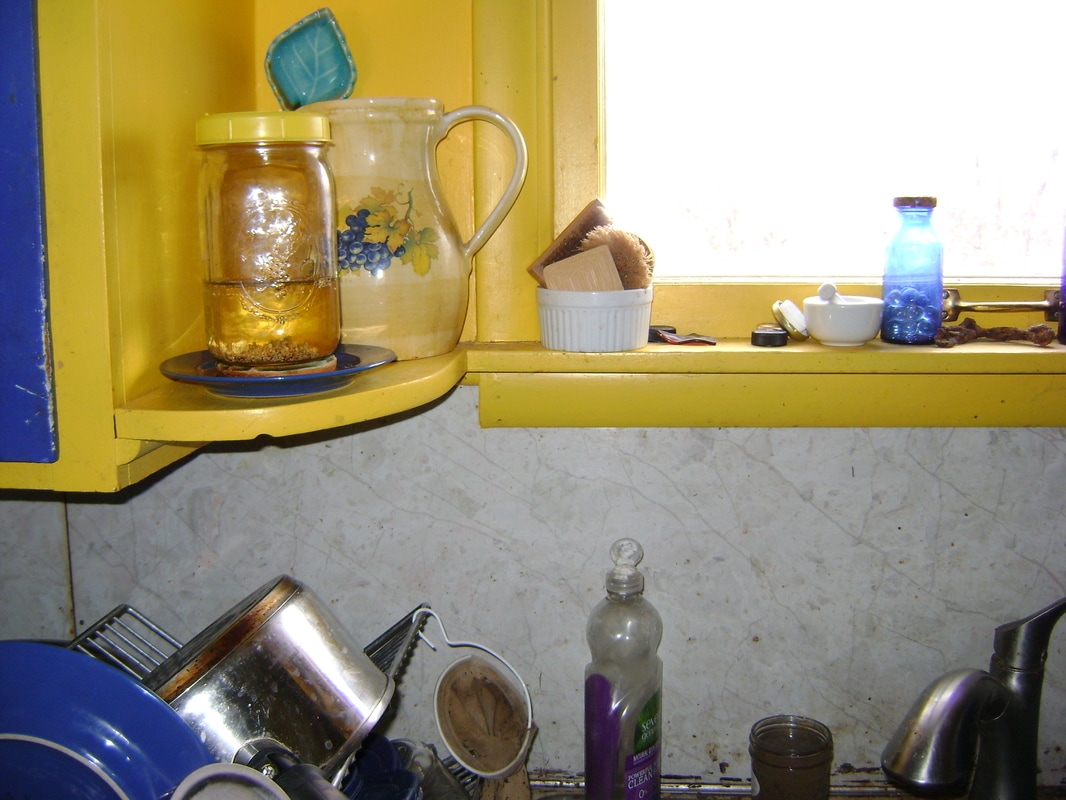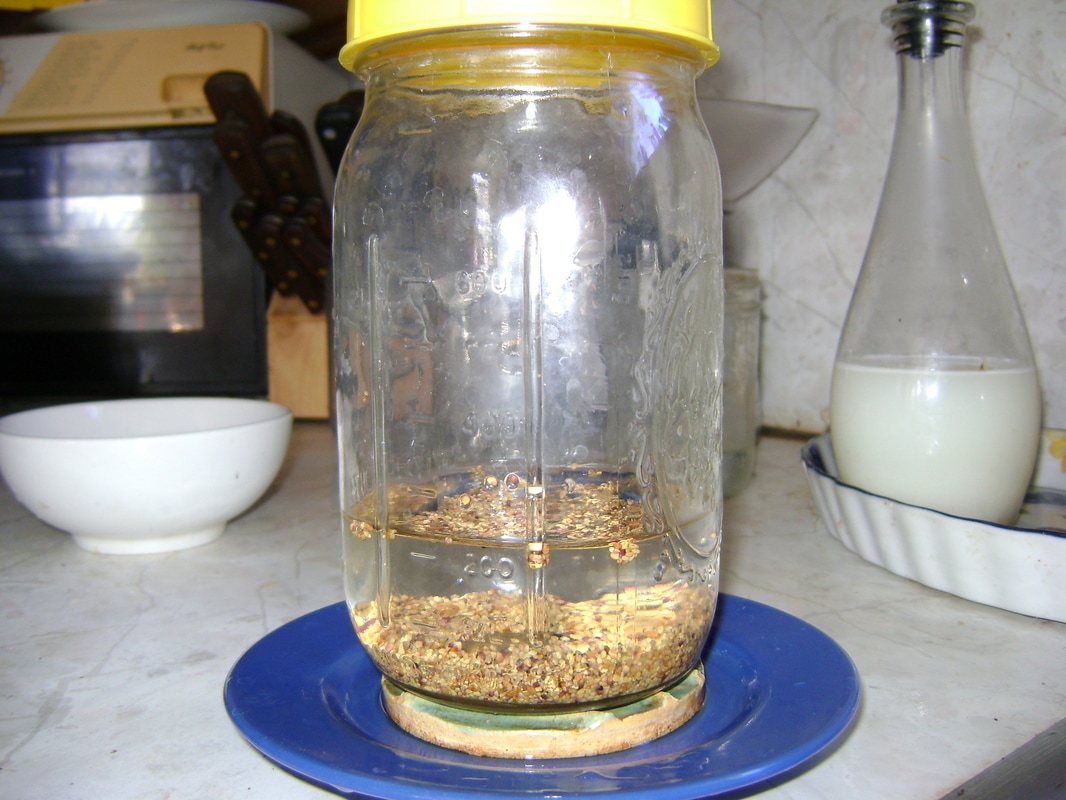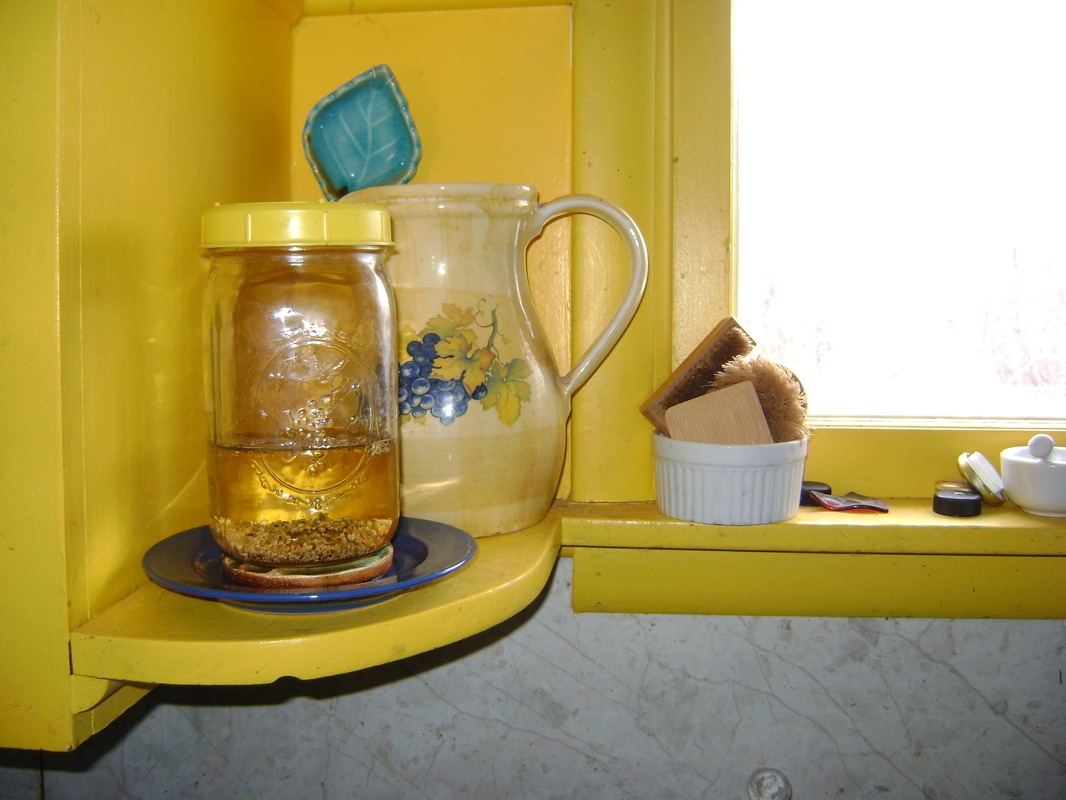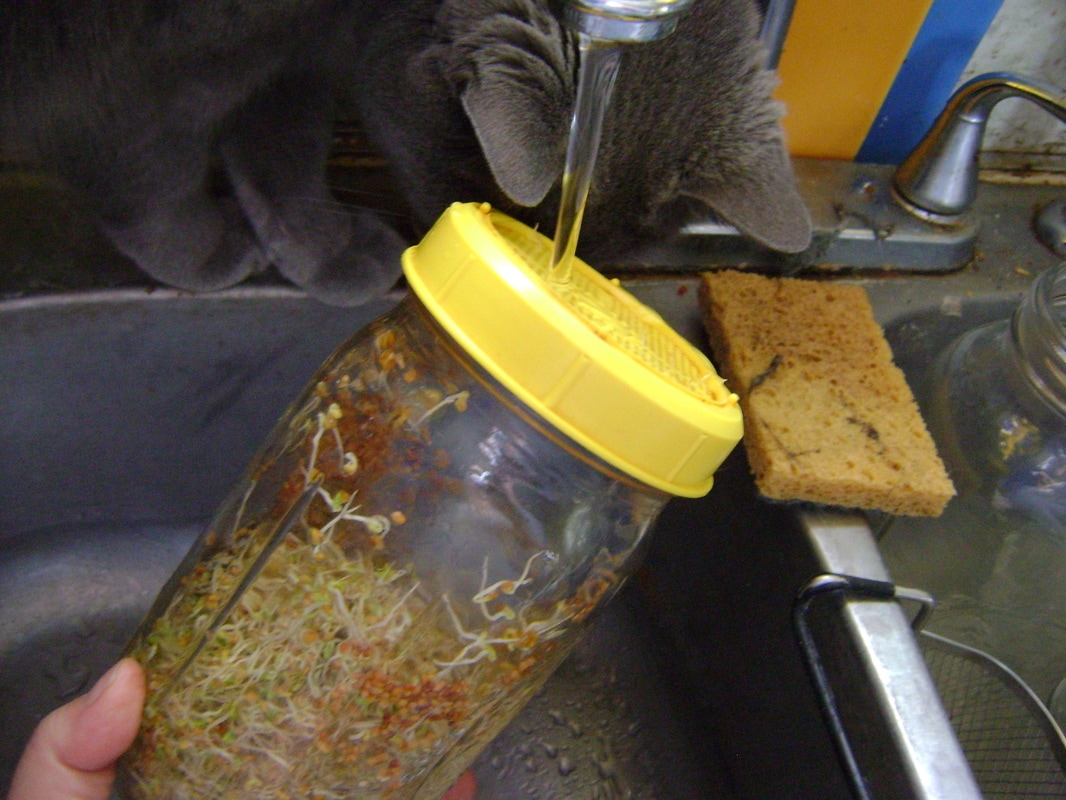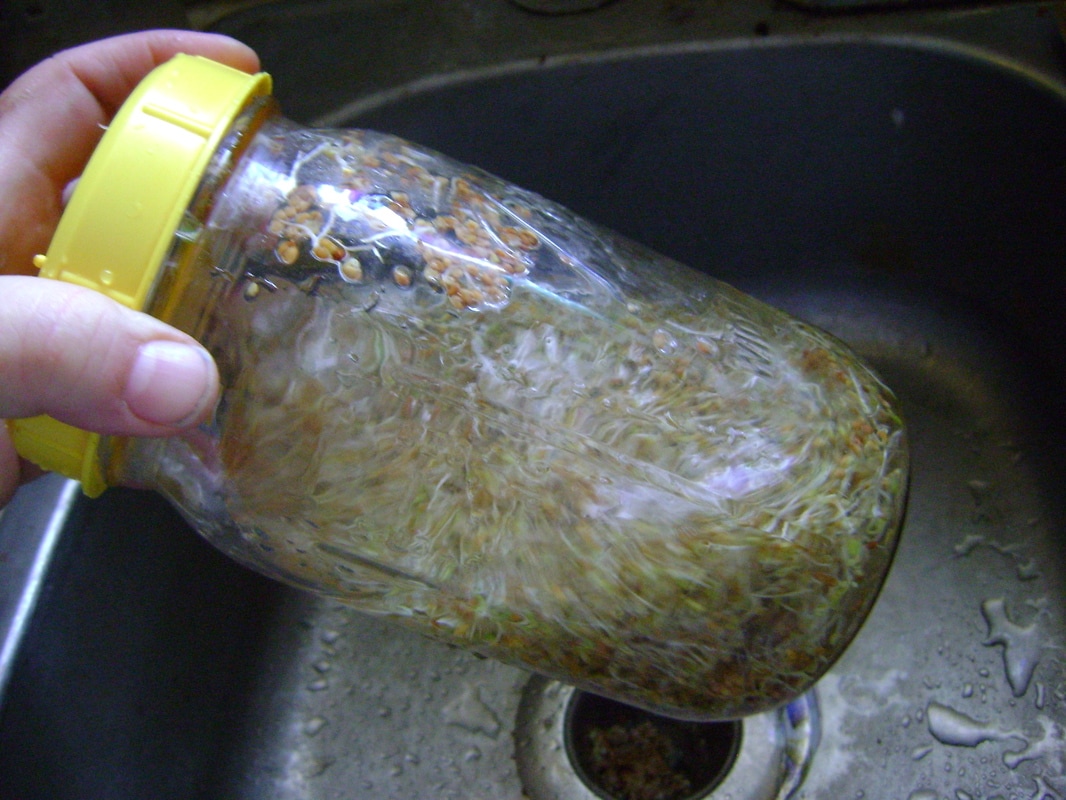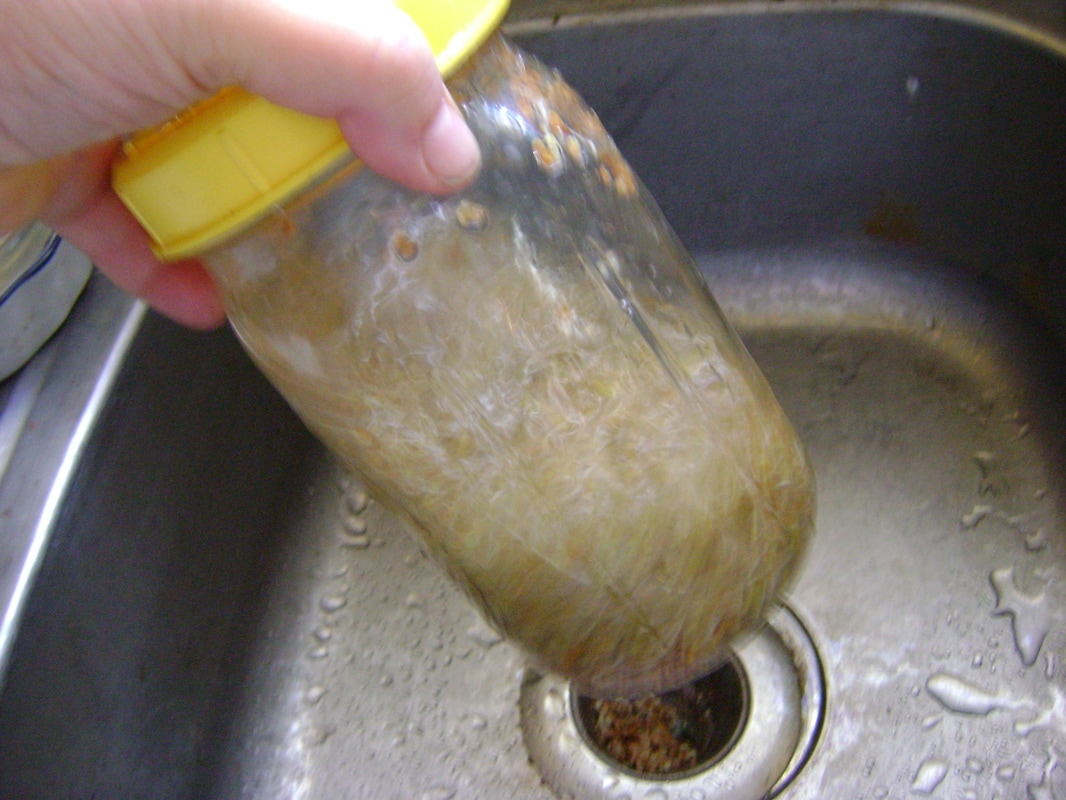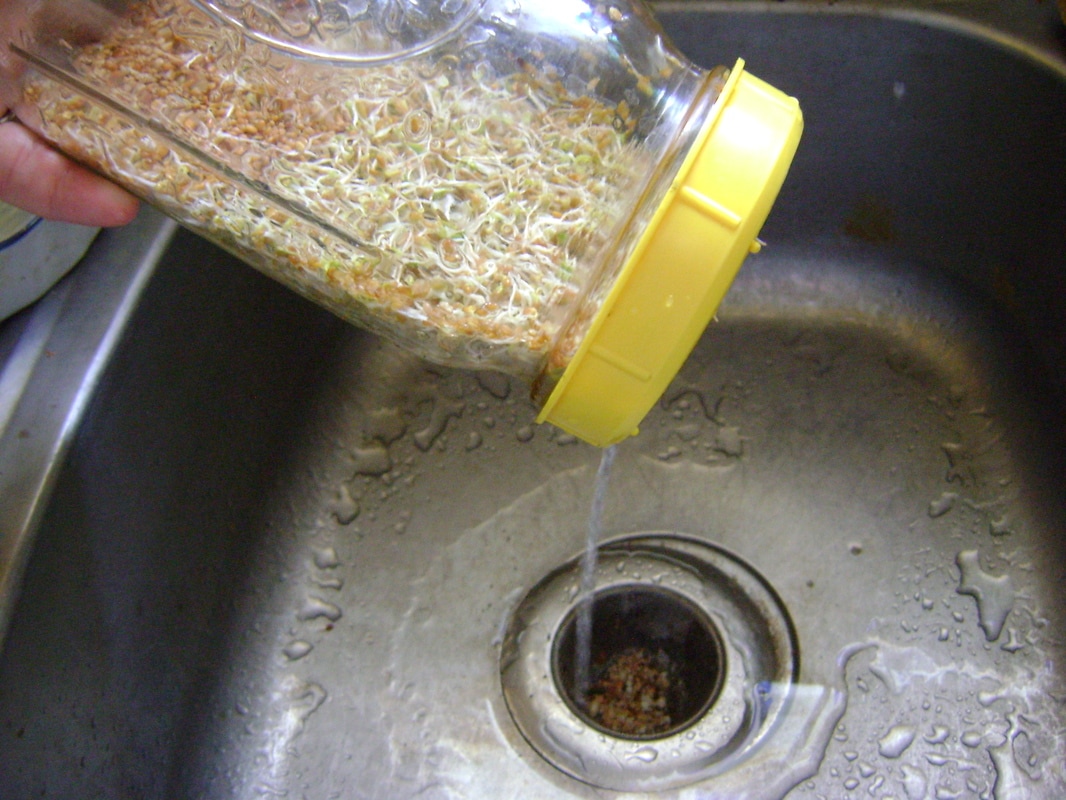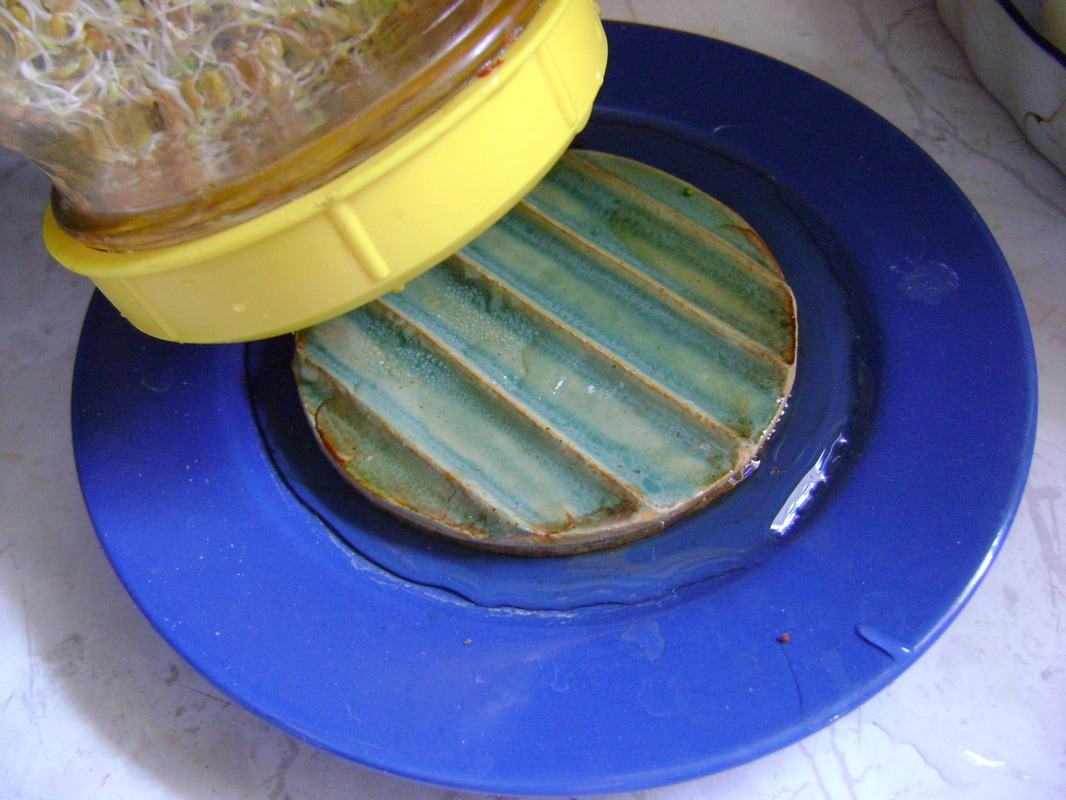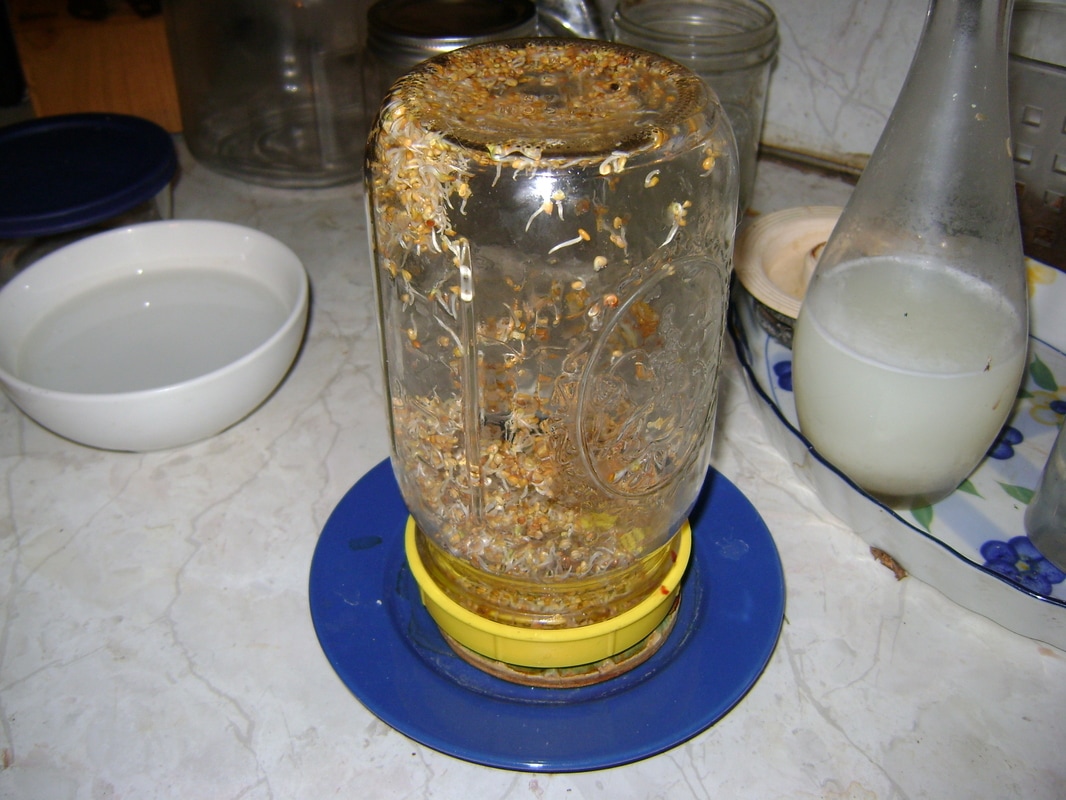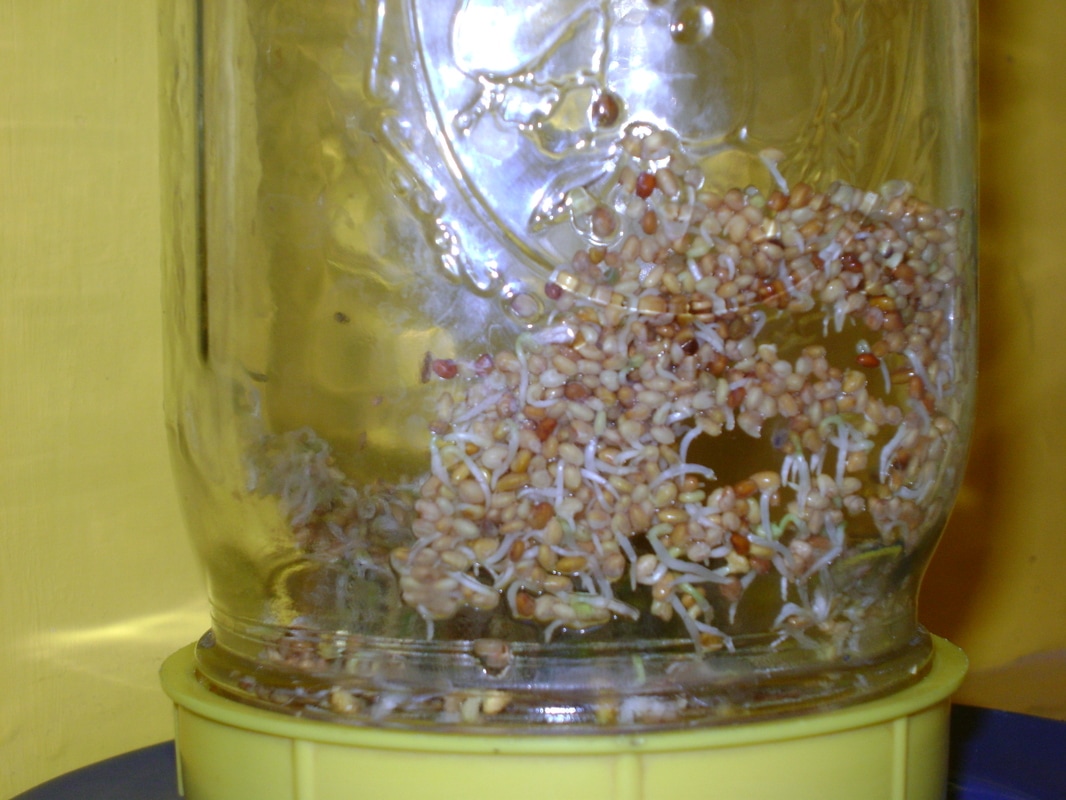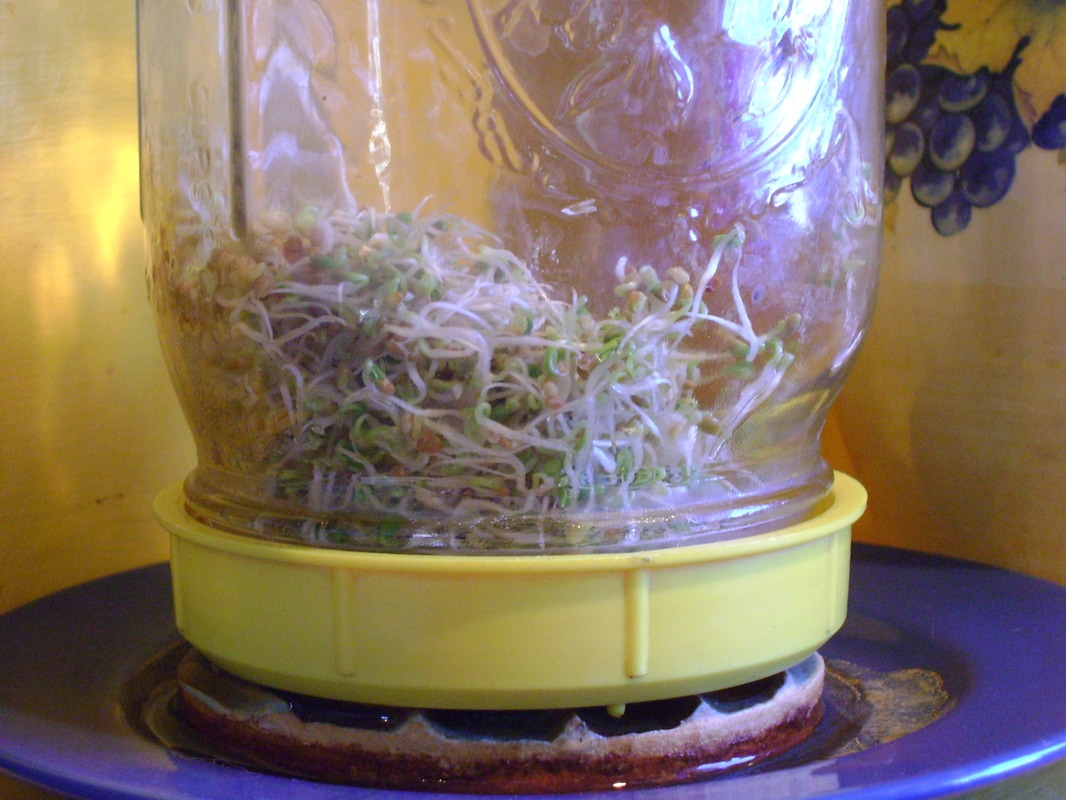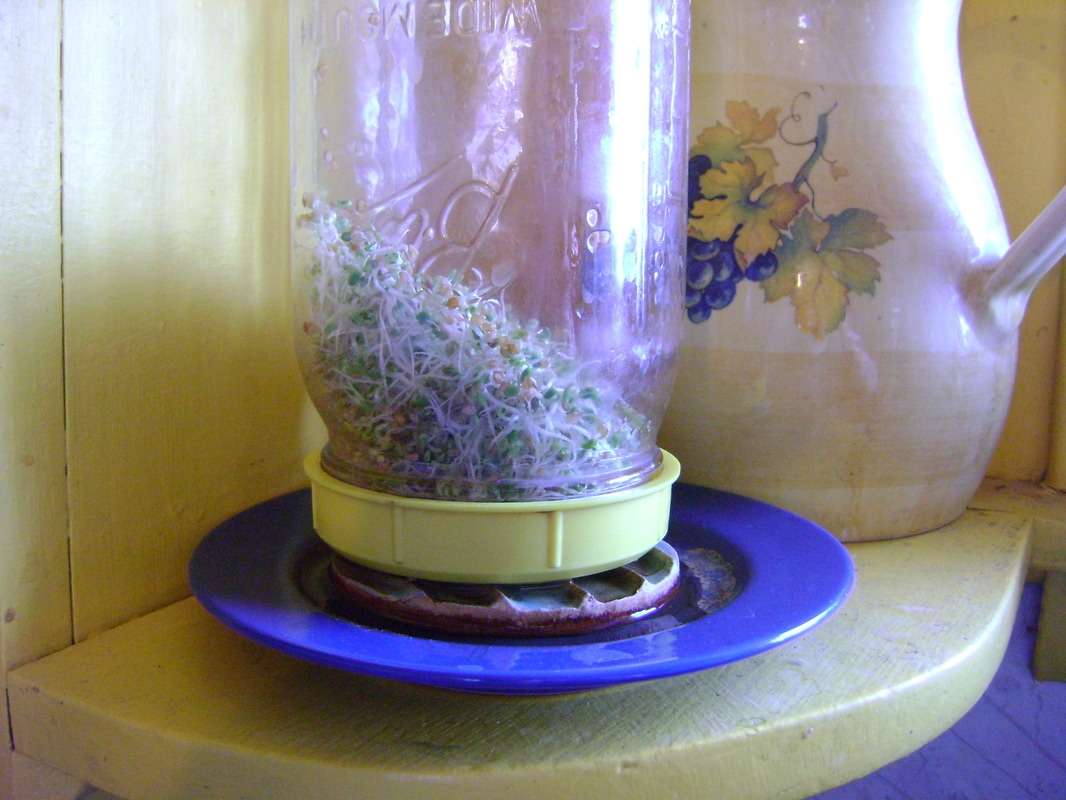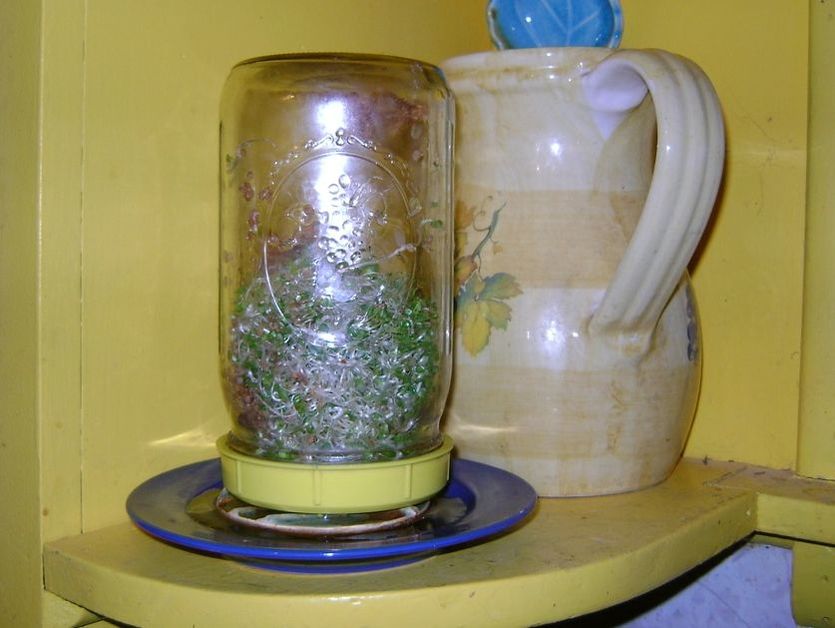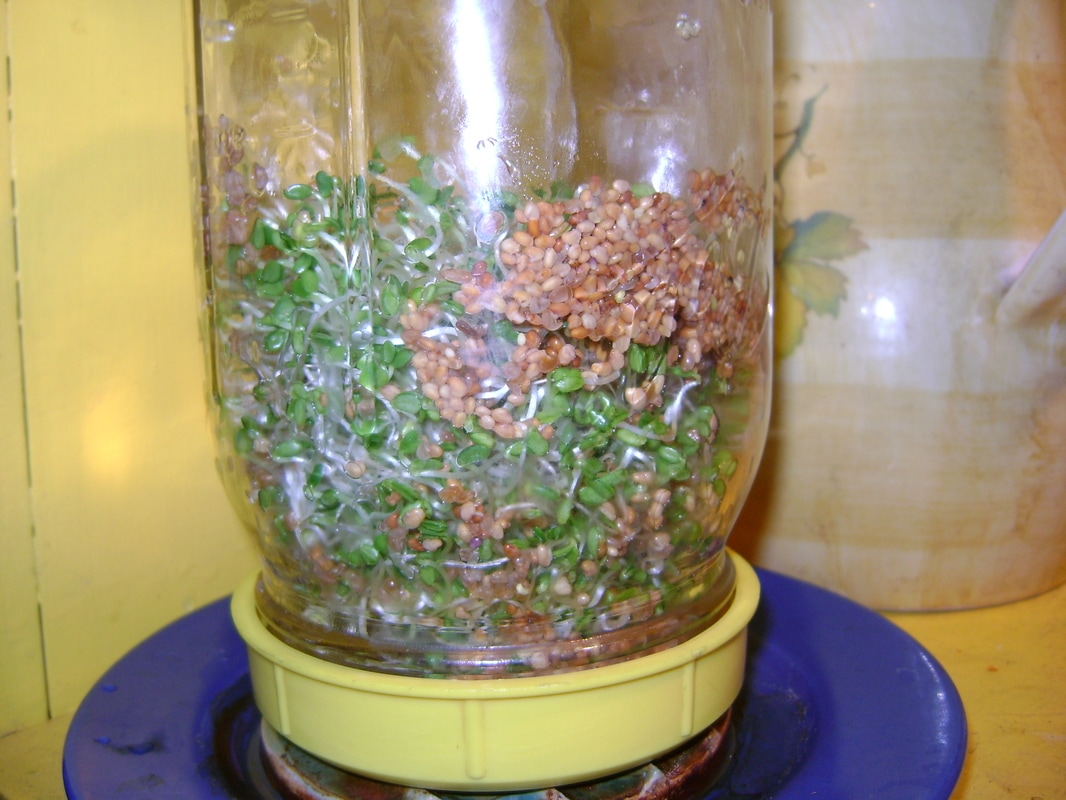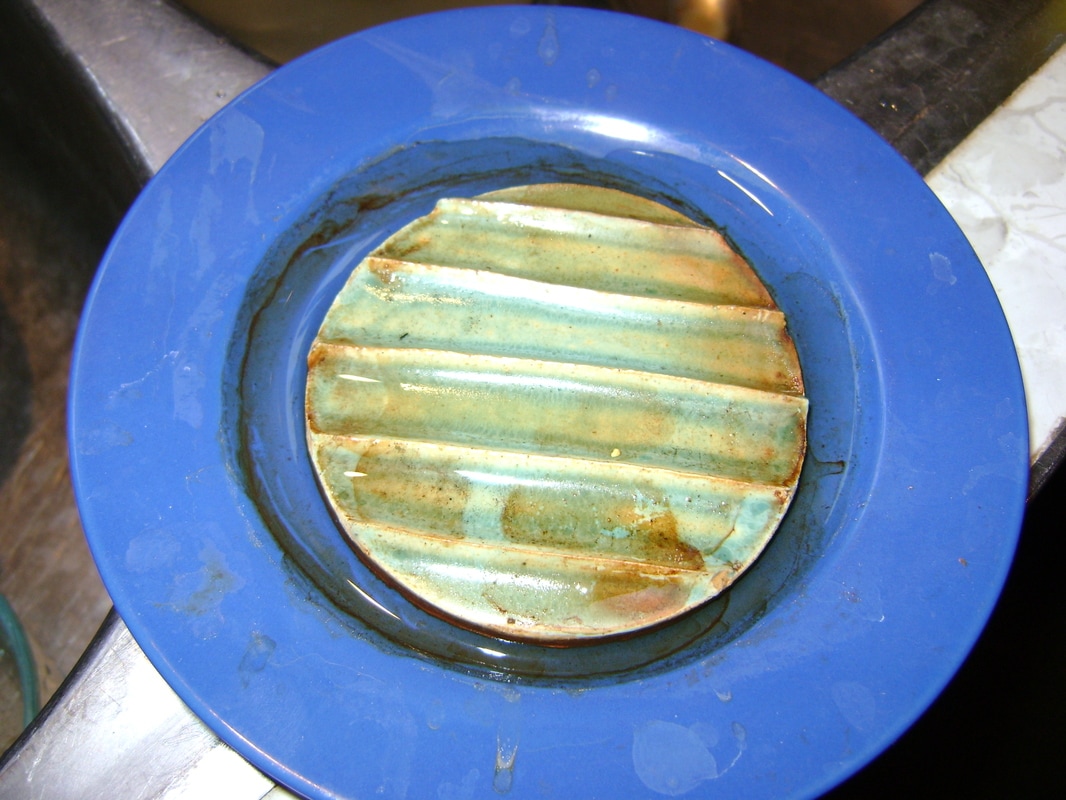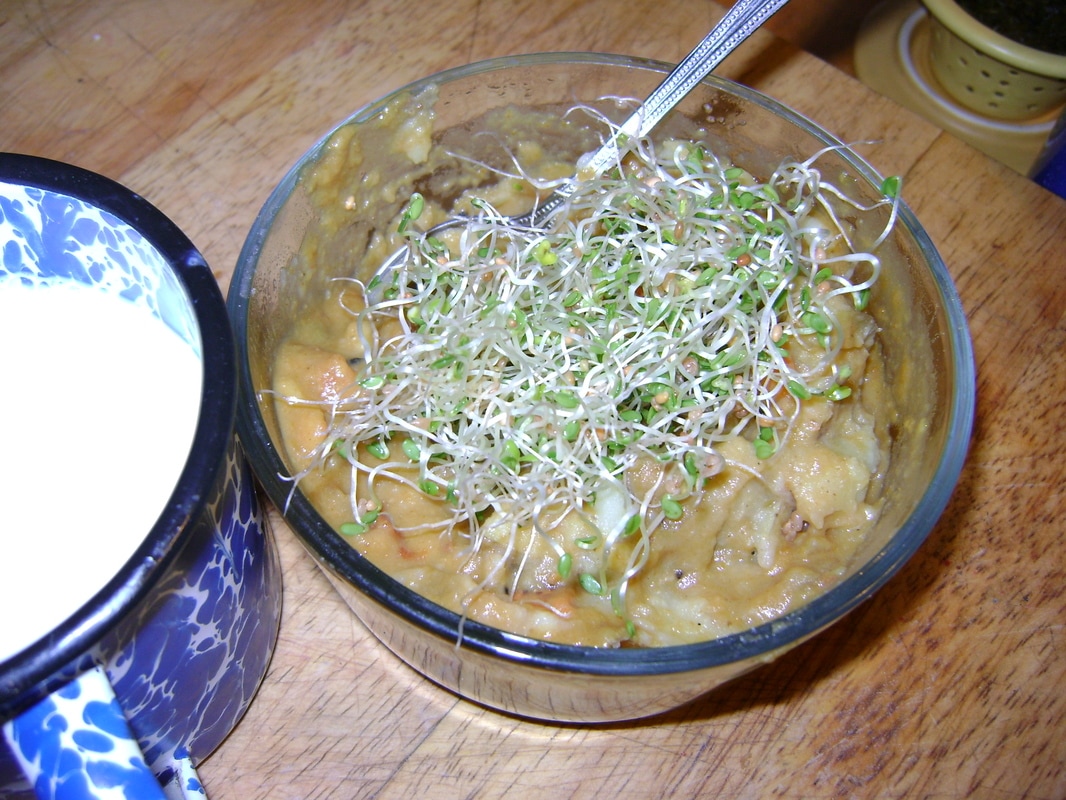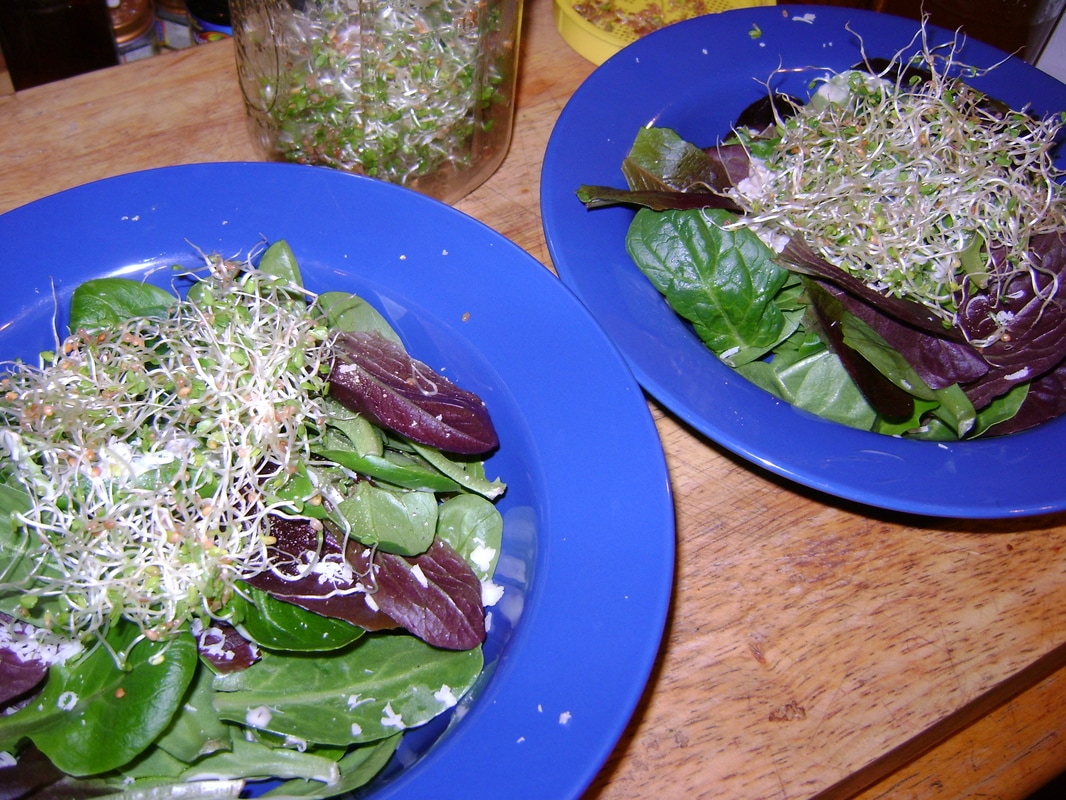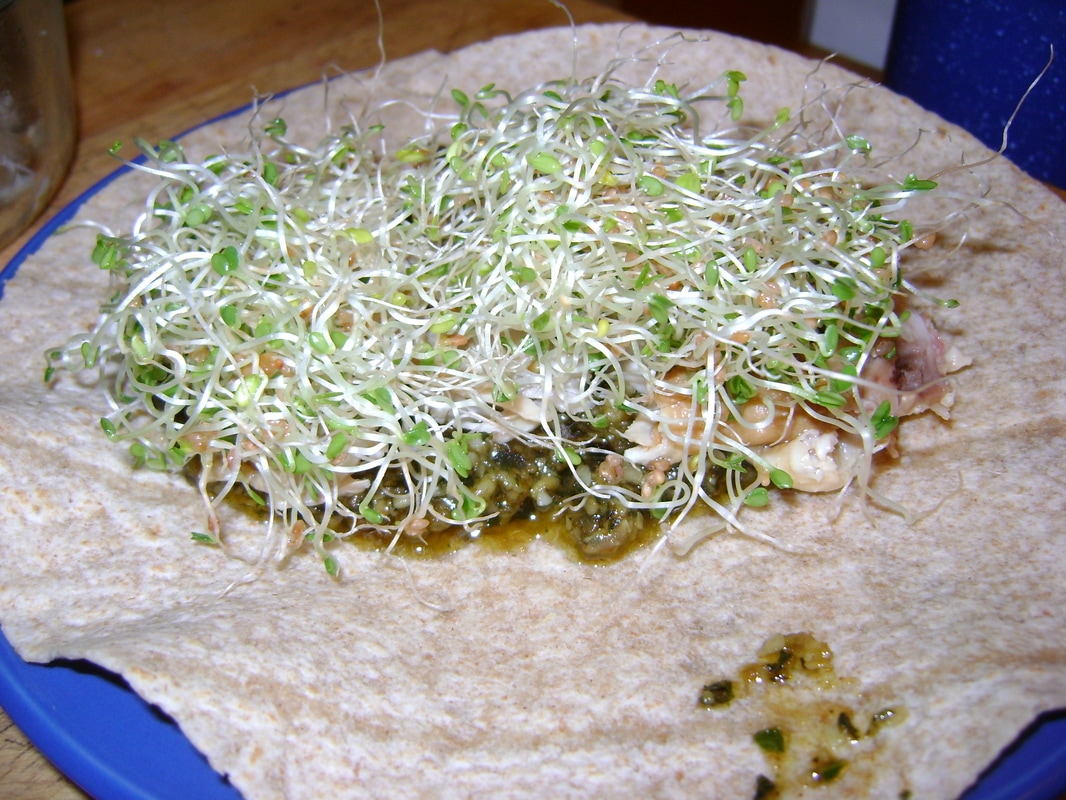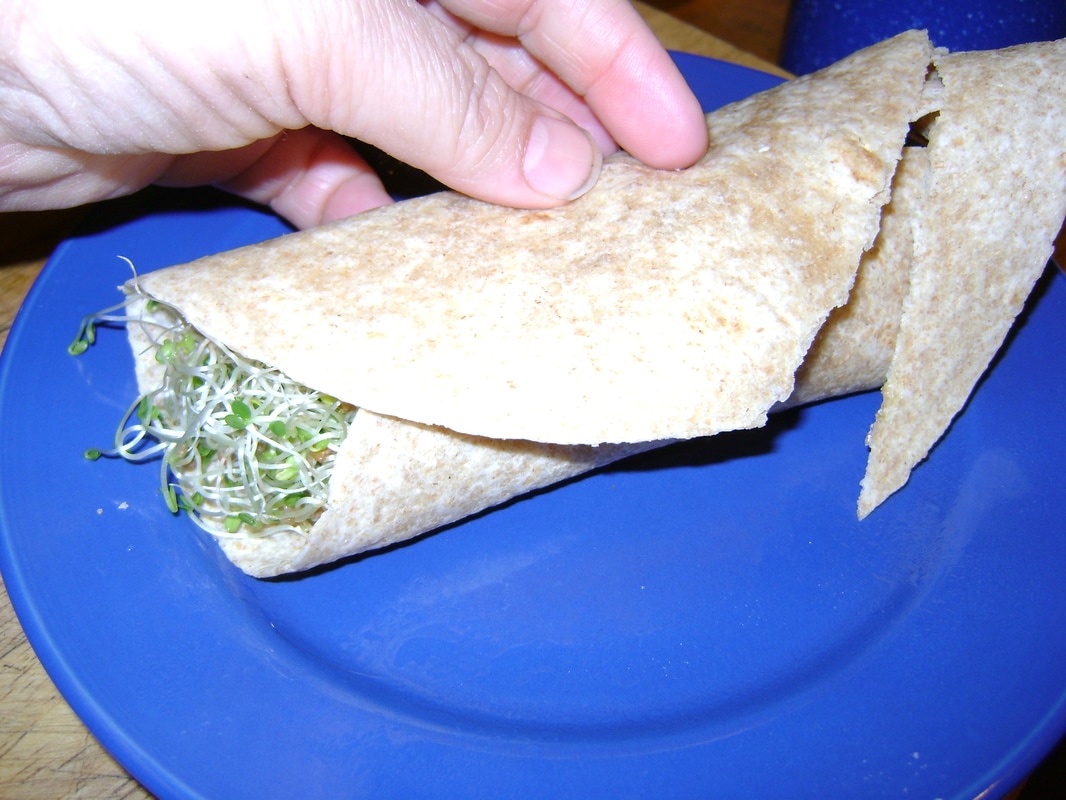We do occasionally get to the weekly Winter market in Madison, where there is a vendor that sells amazing microgreens, but it's easier to grow our own sprouts than make the trek into town regularly. In the Winter we eat mostly veggies that we've preserved, which makes the live sprouts a particularly wonderful taste sensation. You can feel them gifting you with their energy and nutrition. There are so many other things to eat fresh in the Summer, and I'm so busy with the outdoor garden, that I don't usually have the energy to grow anything inside in the Summer.
Supplies needed:You can grow all different kinds of sprout seeds, and there are growing systems you can buy with multiple trays that let you grow several types at once, but I like to keep it simple and easy. So far, I just grow one type at a time, using one of our mason jars.
Here's the set-up I use:
|
|
To the right is a photo of where I grow my sprouts. It's a small shelf above my kitchen sink next to a window, which:
|
To the left is why my system looks like when it's put together and in use.
|
How to Grow Sprouts:
Soak the Seeds First:
|
1. Pour some seeds into the bottom of the mason jar (I usually do about a couple tablespoons) and cover them with water.
|
2. Leave them to soak overnight.
|
Rinse the Seeds/Sprouts Twice a Day:
|
3. Since my sprouts are by my sink, it helps me remember to rinse them twice a day, usually when I'm cleaning up from breakfast and dinner. The seeds and sprouts need water to grow, and rinsing them helps keep them clean so that unpleasant things like mold don't also grow. Some people rinse them three or more times a day, but I'm away at work for almost 12 hours, and I've found that rinsing only twice works just fine.
|
4. To rinse, put enough water in the jar to cover the seeds or sprouts. I use cold water straight from the tap. I find I have to keep the jar at an angle in order for the water to get through the lid I use.
|
|
7. Then drain the jar. The lid will keep the sprouts in while the water pours out. Experiment to see what works best. For my lid, the water pours the fastest if I hold the jar at an angle and rotate it around. If you have house plants, you can pour the water on them instead, so it doesn't go to waste.
|
8. When you've poured out as much water as you can, turn the jar upside down and place it back on top of the soap dish (the green ceramic circle) that is in the middle of your saucer.
|
|
9. This will let the water continue to drain out of the jar into the saucer, where it will evaporate. The sprouts won't be sitting in the water, since the jar is on top of the soap holder. This keeps the sprouts from rotting.
|
10. Continue rinsing the sprouts twice a day. You'll see that some will stick to the top and sides of the jar, and some seeds may never sprout. This is all okay. Just be as gentle as you can with the sprouts- don't forget that they are alive.
|
Continue until they're ready to eat:
14. Keep rinsing twice a day until the sprouts have grown big enough that you want to eat them.
For the red clover seeds I usually grow, this takes about 10 days. Here are some daily photos so you can see the process,
or scroll down to the end if you'd just like some eating suggestions.
For the red clover seeds I usually grow, this takes about 10 days. Here are some daily photos so you can see the process,
or scroll down to the end if you'd just like some eating suggestions.
Clean Your Equipment between Uses:
|
Ways to Eat Sprouts:
I do find it hard to get my timing right. I don't always have grown sprouts ready to eat when I have the right kinds of food to eat them with. So I'm trying to expand my ideas of how they can be used.
If nothing else, I can just eat them straight from the jar. They are full of nutrients and taste like little flashes of sunshine on a cold and cloudy Winter day. Here are some eating suggestions:
My favorite way to eat sprouts is on wraps, which I often have for breakfast:
|
